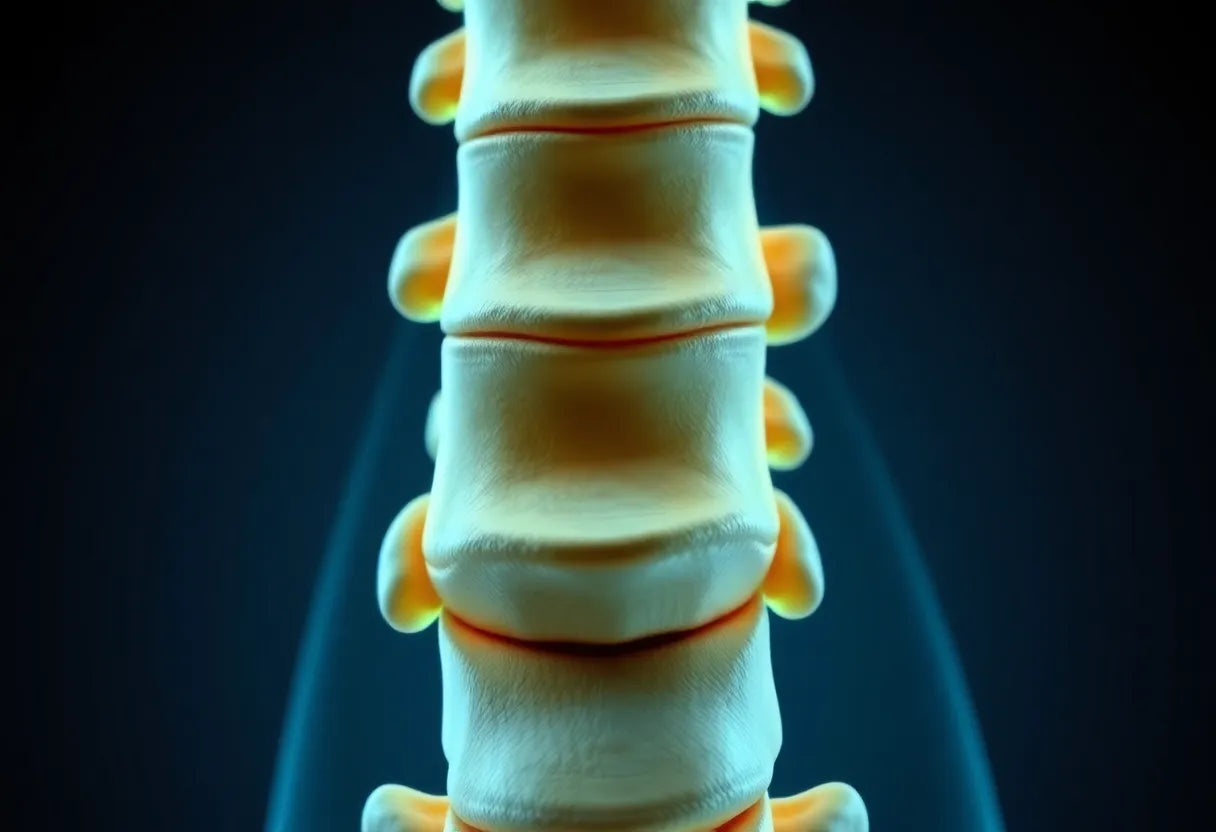Back pain is a common issue that affects millions of people worldwide, significantly impacting daily life and overall well-being. Whether it's due to long hours spent sitting at a desk, poor posture, or stress, many find themselves seeking relief from persistent discomfort. The modern lifestyle, often characterized by prolonged periods of inactivity, has only exacerbated these issues, making back pain a prevalent concern for individuals across different age groups.

Lumbar support belt
Provides stabilisation and relief for lower back pain, ideal for daily comfort and support.
understanding back pain and its impact
Back pain can range from a dull, constant ache to a sudden, sharp pain that makes movement difficult. It can result from a variety of factors, including muscle or ligament strain, bulging or ruptured disks, arthritis, or osteoporosis. However, one of the most common culprits is our increasingly sedentary lifestyle. Spending hours hunched over computers or slouched on couches can lead to muscle imbalances and strain on the spine, contributing significantly to back discomfort.
The impact of back pain extends beyond physical discomfort. It can affect your mood, energy levels, and ability to perform everyday tasks, ultimately diminishing your quality of life. Therefore, addressing back pain through effective exercises and lifestyle changes is crucial for maintaining both physical and mental health.
importance of a happy back
Maintaining a strong and flexible back is essential for overall health and wellness. A "happy back" not only reduces pain but also enhances posture, increases mobility, and boosts your overall sense of well-being. By incorporating specific exercises into your routine, you can strengthen the muscles that support your spine, improve flexibility, and prevent future issues.
Having a healthy back allows you to move more freely and comfortably, enabling you to engage in activities you enjoy without the fear of pain or injury. Moreover, a strong back supports better posture, which can alleviate stress on your spine and reduce the risk of developing chronic pain conditions.
goal of the post
The purpose of this guide is to introduce you to a series of restorative exercises designed to promote a happier, healthier back. These exercises are carefully selected to address common causes of back pain and help you build a strong foundation for spinal health. By following these exercises regularly, you can alleviate existing discomfort, prevent future pain, and enjoy a more active and fulfilling lifestyle.
In the following sections, we will delve into specific exercises that target the key areas contributing to back health. Each exercise is explained with step-by-step instructions and highlights the benefits it offers. Whether you're dealing with occasional back pain or looking to prevent it, these exercises will serve as a valuable tool in your journey towards a pain-free life.
common causes of back pain
Understanding the root causes of back pain is crucial in addressing the discomfort effectively. Among the most prevalent causes is a sedentary lifestyle, which is often unavoidable due to work or personal habits. Sitting for extended periods can lead to muscle imbalances, weakening the muscles that support the spine and increasing the risk of pain. Regular movement and stretching are vital to counteract these effects.
Poor posture is another significant contributor to back pain. Whether you're sitting, standing, or moving, improper posture can place undue stress on your spine, leading to discomfort and potential long-term issues. Maintaining a neutral spine and being mindful of your posture can help mitigate these risks.

Men's Posture Shirt™ - White
Patented shirt with NeuroBand™ tech. Improves posture and relieves pain.
Additionally, a lack of core strength can exacerbate back problems. The core muscles play a fundamental role in supporting the spine and maintaining stability. Without adequate strength in these muscles, the spine is more susceptible to strain and injury. Incorporating exercises that target core stability can significantly reduce the likelihood of back pain.
restorative exercises for a happier back
To promote a healthier back, it's essential to engage in exercises that enhance flexibility, strengthen supporting muscles, and improve posture. Here are some effective exercises to incorporate into your routine:
exercise 1: knee-to-chest stretch
Begin by lying on your back with your knees bent and feet flat on the floor. Slowly bring one knee towards your chest, holding it with both hands. Maintain this position for 20-30 seconds before switching to the other leg. This stretch helps relieve tension in the lower back and improves overall flexibility.
exercise 2: bridge exercise
Lie on your back with your feet flat on the floor and arms at your sides. Lift your hips towards the ceiling while engaging your core and glutes. Hold this position for a few seconds before lowering your hips back down. The bridge exercise strengthens the posterior chain and supports spinal health.
exercise 3: seated rotational stretch
Sit upright with your legs extended in front of you. Cross one leg over the other and gently twist your torso towards the crossed leg, using your opposite arm for support. Hold the stretch for a few seconds before switching sides. This exercise enhances spinal mobility and relieves tension.
exercise 4: dead bug
Lie on your back with your arms and legs in the air, bent at 90 degrees. Slowly lower the opposite arm and leg towards the ground while keeping your core engaged and your back flat. Return to the starting position and repeat with the other side. The dead bug exercise focuses on core stabilization and maintaining a neutral spine.
exercise 5: clamshells with resistance
Lie on your side with your knees bent and feet together. Open and close the top knee while keeping your feet touching, using a resistance band for added challenge if available. This exercise stabilizes the pelvis and supports the lumbar region.
exercise 6: press-ups (from prone)
Lie face down with your hands under your shoulders. Gently press up, keeping your hips on the ground, to promote gentle spinal extension and postural awareness.
exercise 7: hamstring stretch with strap
Lie on your back and loop a strap around one foot. Gently pull the leg towards you while keeping it straight. This stretch increases posterior chain flexibility, reducing lower back strain.
exercise 8: safety squats
Stand with your feet shoulder-width apart. Squat down while maintaining a neutral spine, ensuring your knees do not extend past your toes. Safety squats build functional strength and enhance back support.
Incorporating these exercises into your routine can significantly contribute to a happier back. Regular practice not only alleviates existing pain but also prevents future issues by strengthening the muscles that support your spine. Remember to listen to your body and modify exercises as needed to suit your comfort level and physical capabilities. With consistent effort, you'll be on your way to enjoying a more active and pain-free lifestyle.
additional insights on back health
Incorporating regular movement into your daily routine is crucial for maintaining a happy back. Movement not only helps in improving posture but also facilitates healthy breathing and reduces the risk of injuries. When you engage in exercises that promote spinal health, you are actively working towards a more flexible and resilient back. This holistic approach to movement ensures that your back remains strong and less prone to pain, making everyday activities more enjoyable.
Preventive measures are just as important as restorative exercises when it comes to back health. By integrating these exercises into your weekly routine, you can effectively prevent future back issues. Consistency is key; aim to perform these exercises at least 3-4 times a week. This regular practice will help you build and maintain the strength and flexibility needed to support your spine.
frequently asked questions
how often should I perform these exercises?
Ideally, incorporate these exercises into your routine 3-4 times a week for optimal results. Consistency is essential to see significant improvements in back health.
can these exercises be done at home without equipment?
Yes, most exercises can be performed at home with minimal to no equipment. A resistance band or strap can enhance some exercises, but they are not necessary for the basic routines.
are these exercises suitable for everyone?
These exercises are generally safe for most people with mild to moderate back issues. However, it's advisable to consult a healthcare professional if you have specific concerns or pre-existing conditions.
how long will it take to see improvements in my back health?
Consistent practice can lead to noticeable improvements in a few weeks, though individual results may vary. Patience and regularity are key to achieving a healthier back.
can I combine these exercises with other workouts?
Absolutely. These exercises can complement other fitness routines, focusing on overall body strength and flexibility. They are designed to integrate seamlessly into various workout regimens.
By understanding the importance of a happy back and incorporating these exercises into your lifestyle, you can significantly enhance your spinal health and overall well-being. Remember, a strong and flexible back is the foundation for a more active, pain-free life.
Kilder
- Smith, A. (2017). "The Impact of Sedentary Lifestyle on Back Health." Journal of Back Health.
- Mayo Clinic Health System. (2019). "Exercises for a Healthy Back."
- Johnson, B. (2020). "Understanding Back Pain: Causes and Solutions." International Journal of Pain Management.
- Lee, C. (2025). "Public Health Perspectives on Back Pain Prevention." Frontiers in Public Health.
- Mayo Clinic. (2021). "Back Pain: Causes and Treatments."
- Harvard Health Publishing. (2018). "Effective Exercises for Building a Strong Back."
- Versus Arthritis. (2022). "Exercises for the Back."
- Harvard Health Publishing. (2019). "Stretching and Strengthening Exercises to Relieve and Prevent Lower Back Pain."
- ACE Fitness. (2018). "ACE-Sponsored Research: What is the Best Back Exercise?"


















